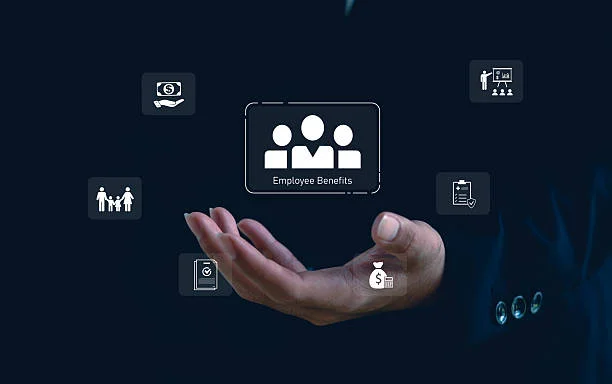The traditional benefits package is getting a serious makeover. While health insurance and 401(k) matching remain foundational, forward-thinking companies are discovering that rigid, one-size-fits-all perks often miss the mark with today’s diverse workforce. Enter stipends: flexible, tax-advantaged allowances that are reshaping how organizations support their employees while building stronger, more engaged teams.
But what is a stipend, exactly? At its core, a stipend is a fixed sum of money provided to employees for specific purposes—whether that’s professional development, wellness activities, remote work equipment, or continuing education. Unlike traditional benefits that offer the same thing to everyone, stipends give employees choices about how to use designated funds within defined categories. This simple shift from prescriptive to flexible benefits is proving to be surprisingly powerful for companies of all sizes.
The beauty of stipends lies in their versatility. A parent might use a wellness stipend for family gym memberships, while a single professional could apply those same funds toward meditation apps or cycling gear. This flexibility doesn’t just feel good—it delivers tangible advantages that directly impact a company’s bottom line and competitive positioning.
Dive into insights that matter—check out our related posts for smart ideas!
The Cost-Efficiency Advantage
Let’s talk about the financial reality that every HR leader faces: comprehensive benefits packages are expensive. Traditional perks often require significant administrative overhead, vendor negotiations, and ongoing management. Stipends, by contrast, offer remarkable cost efficiency.
When companies provide blanket benefits like on-site gyms or catered lunches, they’re paying full price whether 20% or 80% of employees use them. Stipends eliminate this waste. You’re only spending money that employees actually use, and you’re capping that spend at predetermined amounts. This predictable budgeting makes financial planning infinitely simpler.
Moreover, stipends can often be more tax-advantaged than salary increases. Depending on how they’re structured and what they cover, certain stipends may qualify for tax benefits that make them cost-effective for both employer and employee. A $1,000 stipend can deliver more real value to an employee than a $1,000 raise, while potentially costing the company less in payroll taxes.
Attraction and Retention in a Competitive Market
The talent war isn’t slowing down, and compensation alone isn’t enough to win top candidates. Modern professionals—especially millennials and Gen Z workers who now dominate the workforce—explicitly seek employers who demonstrate flexibility and understanding of individual needs.
Stipends send a clear message: “We trust you to know what’s best for your wellbeing and productivity.” This trust is powerful. When candidates are choosing between similar offers, the company offering a $1,500 annual professional development stipend alongside a wellness allowance often stands out as more progressive and employee-centric than one offering only traditional benefits.
Retention follows similar logic. Employees who feel genuinely supported in their professional growth and personal wellbeing are demonstrably more loyal. When someone uses their learning stipend to attend a conference or earn a certification, they’re simultaneously improving their skills and deepening their connection to an employer that invested in them. That’s a retention strategy that pays dividends.
Boosting Productivity and Engagement
There’s substantial evidence linking employee wellbeing to productivity, and stipends directly address this connection. A remote work stipend that allows employees to create ergonomic home offices doesn’t just make people comfortable—it reduces physical strain, decreases sick days, and improves focus.
Professional development stipends create upskilling opportunities that benefit both parties. An employee who uses funds to learn new software or methodologies brings fresh capabilities back to their team. The company gains enhanced organizational capacity without shouldering the full cost of formal training programs.
Wellness stipends tackle the burnout epidemic head-on. Whether employees choose therapy, fitness classes, or hobby supplies that help them decompress, the mental health impact translates directly to workplace performance. Engaged, balanced employees are creative problem-solvers who bring energy to their work rather than simply going through the motions.
Simplified Administration and Scalability
Anyone who has managed employee benefits knows the administrative burden can be crushing. Negotiating with multiple vendors, tracking utilization, handling complaints about limited options—it’s resource-intensive work that pulls HR teams away from strategic initiatives.
Stipends dramatically simplify this equation. Modern benefits platforms make stipend management straightforward: set the parameters, allocate funds, and let employees submit receipts or use designated cards. Many platforms automate the entire reimbursement process, requiring minimal HR intervention.
This simplicity scales beautifully. Whether you’re a 50-person startup or a 5,000-employee enterprise, stipends work the same way. You’re not negotiating different rates for different office locations or trying to find vendors that operate in all your markets. The flexibility that serves employees so well also serves the organization’s operational needs.
Enhanced Diversity, Equity, and Inclusion
Traditional benefits often inadvertently favor certain demographics. On-site perks benefit those who work in offices, while remote workers miss out entirely. Gym memberships appeal to the fitness-inclined but ignore those with different wellness needs. Commuter benefits don’t help employees who’ve relocated to lower-cost areas.
Stipends level the playing field. A remote worker in Montana has the same wellness stipend as someone in Manhattan, each using it according to their local context and personal preferences. This equity isn’t just ethically sound—it’s strategically smart. Companies that genuinely support diverse needs build more inclusive cultures that attract diverse talent.
Parents might use family-focused stipends differently than young professionals, and that’s perfectly fine. The recognition that different life stages and circumstances require different support creates belonging in ways that standardized benefits simply cannot.
The Competitive Edge
Ultimately, stipends represent a philosophical shift in how companies view their relationship with employees. Rather than dictating what support should look like, organizations that embrace stipends say, “We’ll provide resources; you decide how to use them wisely.”
This approach aligns perfectly with broader workplace trends toward autonomy, flexibility, and personalization. Companies that recognize employees as unique individuals with varying needs position themselves as employers of choice in an increasingly competitive landscape.
The advantages are clear: cost efficiency, enhanced recruitment and retention, improved productivity, administrative simplicity, and meaningful progress toward equitable workplaces. For companies willing to rethink traditional benefits structures, stipends offer a powerful tool for building the engaged, loyal, high-performing teams that drive sustainable success.
Spotlight on what matters most—don’t miss our featured post this week!







